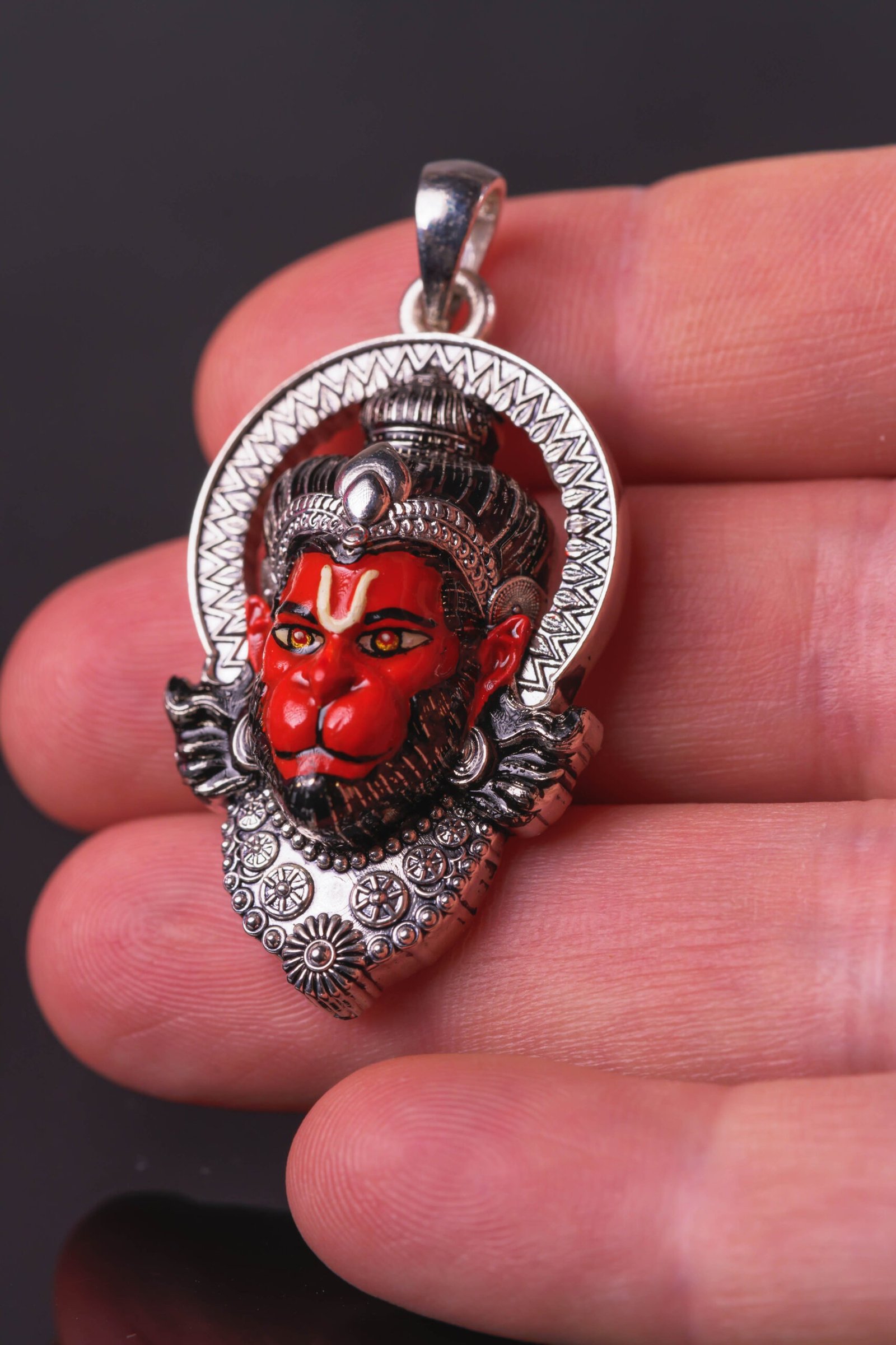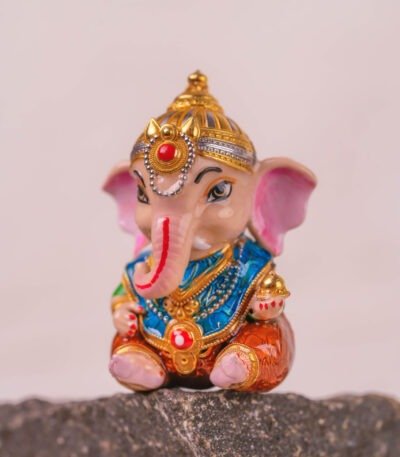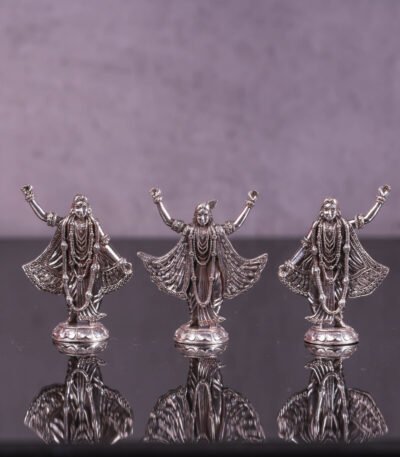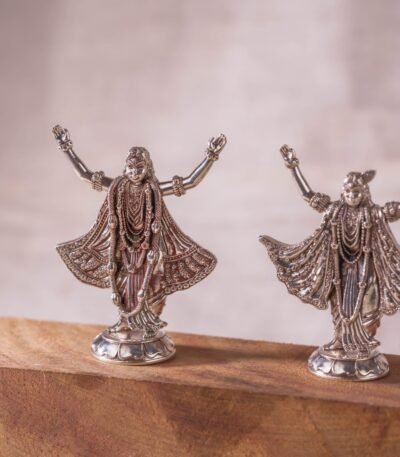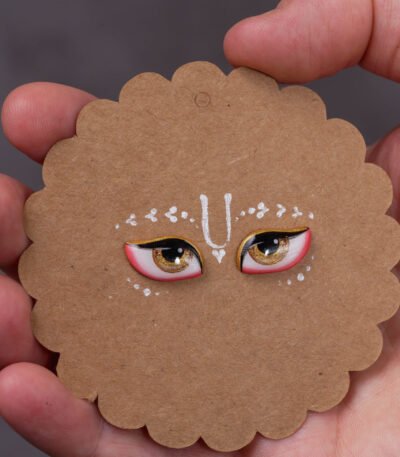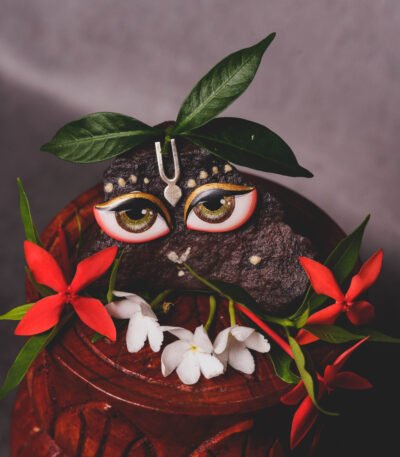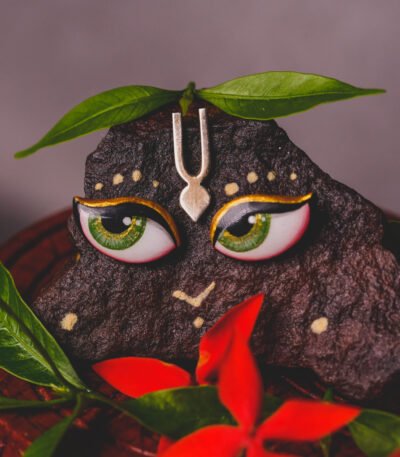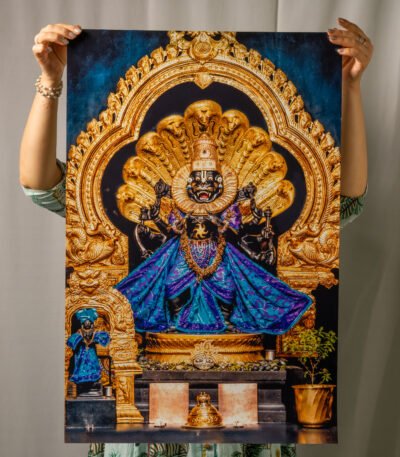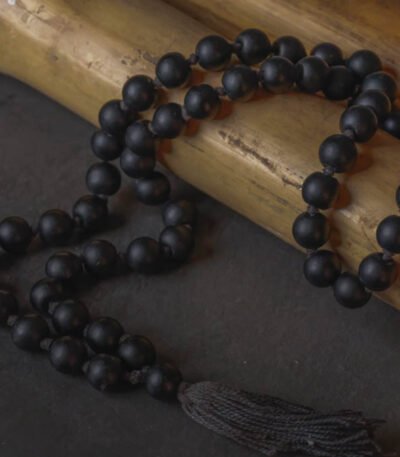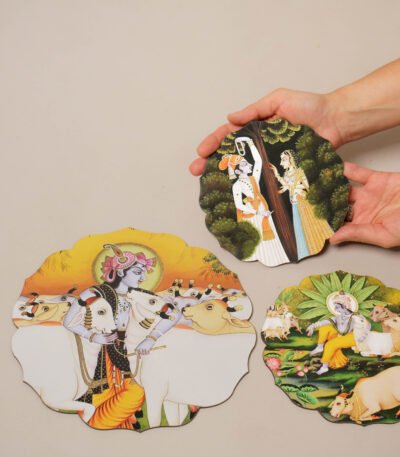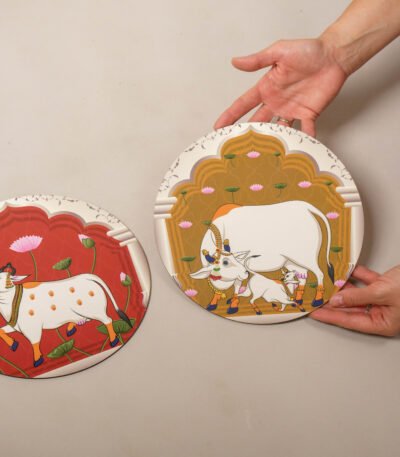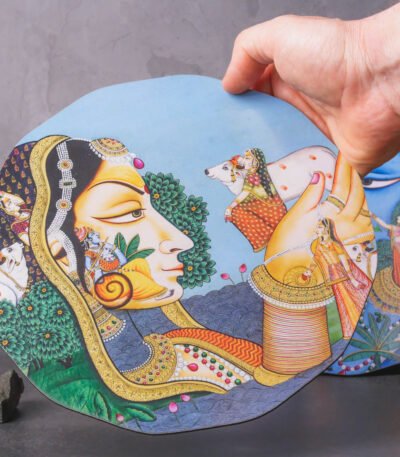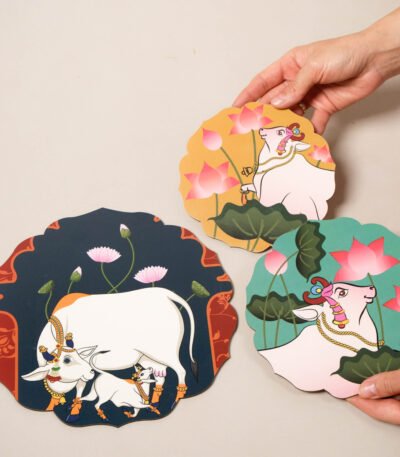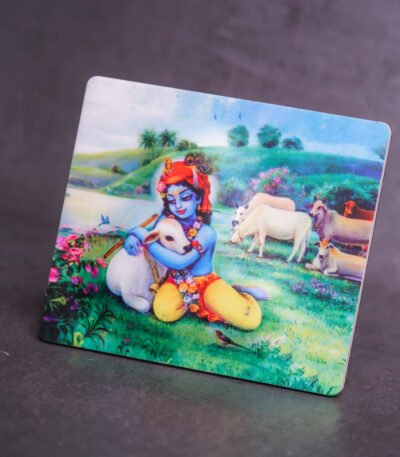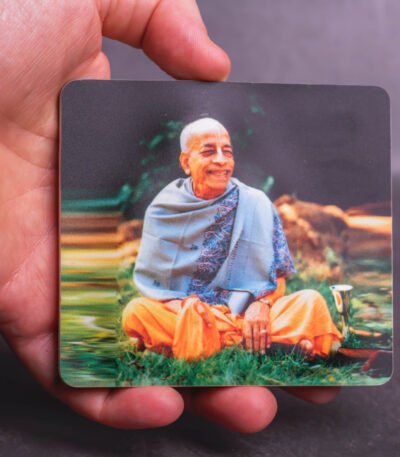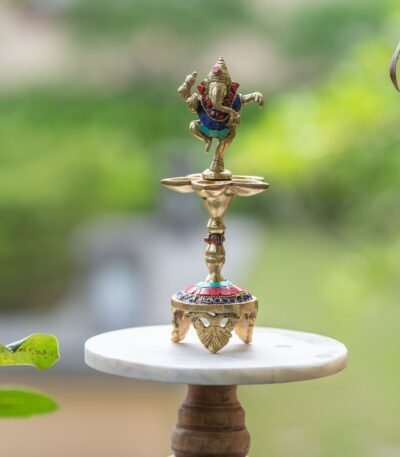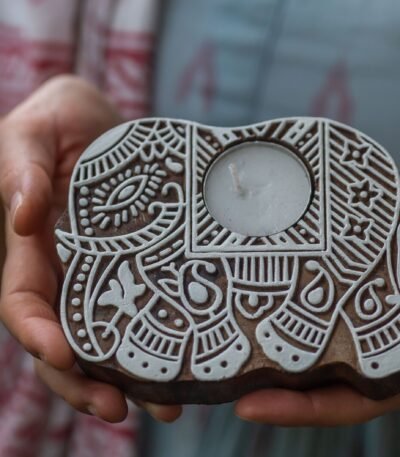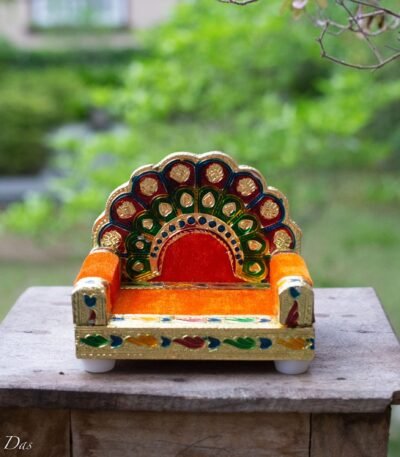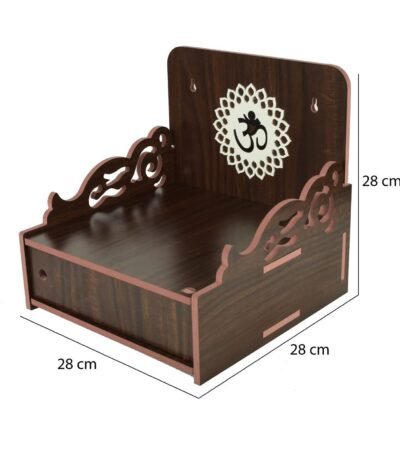Filter by price
Showing 1–40 of 203 resultsSorted by latest
Ganesha Goddess of knowledge, Indian demigods, silver figurine of high quality, handmade Hare Krishna. decoder for home or Car
This exquisite 3cm silver Ganesha figurine embodies the divine energy of the beloved Lord Ganesha, not as a goddess, but as the revered God of wisdom, knowledge, and new beginnings. Crafted from pure or sterling silver, this petite statue gleams with a sacred radiance, perfect for a personal altar, study space, or as a cherished keepsake.
Despite its small size, the figurine meticulously captures Ganesha’s iconic form: his elephant head symbolizing intellect and wisdom, his large ears representing attentive listening, and his trunk, often holding a sweet or a symbolic object. He is often depicted seated in a relaxed posture, exuding a sense of peace and benevolence.
1.5-inch 925 silver Pancha-Tattva would be a small, precious representation of the five principal associates of Sri Chaitanya Mahaprabhu
This exquisite 1.5-inch silver Gaura Nitay idol is a beautiful and cherished representation of Lord Chaitanya and Lord Nityananda Prabhu
Eyes for Deities (Govardhan or Shaligram) , Krishna Style, Hare Krishna, Giriraj eyes.
1.5 inches horn for Radha Krishna, Govardhan , Shaligramm, Gaura NItay to decorate your altar, a Krishna-style Altar
1.5 inches Mridanga for Radha Krishna, Govardhan , Shaligramm, Gaura NItay to decorate your altar, a Krishna-style Altar
1 inch Karatals for Radha Krishna, Govardhan , Shaligramm, Gaura NItay to decorate your altar, a Krishna-style Altar
3 inches mirror set for Radha Krishna, Govardhan , Shaligramm to decorate your altar, a Krishna-style Altar
Eyes for Deities (Govardhan or Shaligram) , Krishna Style, Hare Krishna, Giriraj eyes.
Eyes for Deities (Govardhan or Shaligram) , Krishna Style, Hare Krishna, Giriraj eyes.
Eyes for Deities (Govardhan or Shaligram) , Krishna Style, Hare Krishna, Giriraj eyes.
Jagannath Baladev and Subhadra hand made 4″ inches !!! Hare Krishna, Krishna things, Holy Name Jagannath
Eyes for Deities (Govardhan or Shaligram) , Krishna Style, Hare Krishna, Giriraj eyes.
Eyes for Deities (Govardhan or Shaligram) , Krishna Style, Hare Krishna, Giriraj eyes.
Eyes for Deities (Govardhan or Shaligram) , Krishna Style, Hare Krishna, Giriraj eyes.
Eyes for Deities (Govardhan or Shaligram) , Krishna Style, Hare Krishna, Giriraj eyes.
Shaligramm Shila Beads Round 54 beads, japa,Spiritual things,Holy things.stone
Japa by Bhurijana Dasa: A Guide to Improve Your Chanting
Japa, meaning “to recite” or “to chant,” refers to the meditative practice of chanting the Hare Krishna mantra in Hinduism. Bhurijana Dasa, a senior Hare Krishna monk and spiritual teacher, wrote a book titled Japa: Nine Keys From the Siksastaka to Improve Your Your Japa.
Here’s what you might find in this book:
The Importance of Japa: Bhurijana Dasa likely emphasizes the significance of japa in spiritual development, citing its benefits for achieving inner peace, connecting with the divine, and overcoming challenges.
Nine Keys from the Siksastaka: The Siksastaka is a prayer by Srila Prabhupada, the founder of ISKCON (International Society for Krishna Consciousness). The book might explore nine key principles from this prayer that can help improve your japa practice. These principles could include:
- Attention and Focus: Maintaining focus on the mantra and its meaning.
- Cleanliness and Purity: Approaching japa with a clean mind and body.
- Humility and Respect: Chanting with humility and reverence for the holy names.
- Offenses and Avoiding Them: Identifying and avoiding actions that can diminish the effectiveness of japa.
- Association and Fellowship: Surrounding yourself with positive influences who support your japa practice.
- Quantity and Quality: Balancing the importance of chanting a sufficient amount with maintaining focus and quality.
- Faith and Determination: Approaching japa with unwavering faith and determination.
- Patience and Perseverance: Recognizing that improving japa takes time and consistent effort.
Practical Techniques: The book might offer practical techniques to help you implement the nine keys, such as meditation exercises, breathing techniques, and tips for overcoming distractions.
Real-Life Examples: Bhurijana Dasa might share personal anecdotes or stories from scriptures to illustrate the power of japa and the challenges one might face.
Overall, Japa: Nine Keys From the Siksastaka to Improve Your Japa is likely a valuable resource for anyone interested in deepening their japa practice.
Here are some additional points to consider:
- The book might be specifically geared towards followers of ISKCON, but the core principles of japa can be universally applicable.
- If you’re new to japa, you might want to explore introductory resources on japa and the Hare Krishna mantra before diving into this book.














